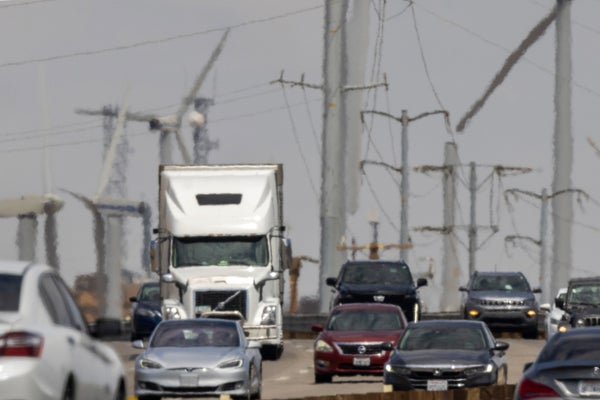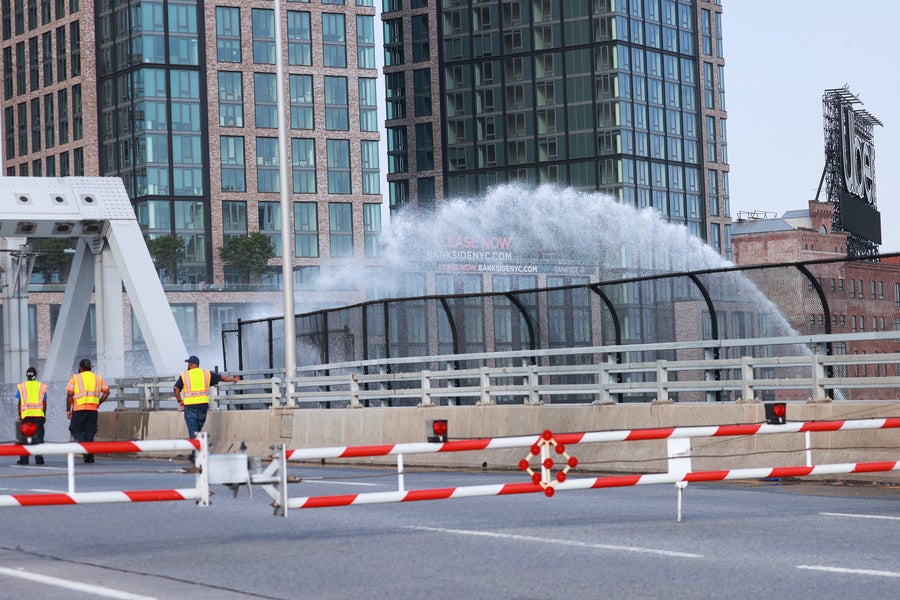The Hidden Ways Extreme Heat Disrupts Infrastructure
Scorching temperatures are further burdening an already-troubled infrastructure system across much of the U.S. in ways people are still learning to recognize

Infrastructure across the U.S. is struggling under the climate crisis. Dramatic examples include torrential rains turning New York City’s subway entrances into waterfalls, record cold temperatures shutting down Texas’s power grid and the rising Pacific Ocean eating away at coastal highways.
Extreme heat is leaving its own, more subtle mark on the built environment. Roads, power lines, transportation systems and hospitals are being harmed. For some types of infrastructure, researchers are just beginning to understand what heat is doing.
“Heat itself is sort of an invisible hazard,” says Sara Meerow, an urban planner at Arizona State University. “Compared to flooding, hurricanes, wildfires, you don’t immediately see the impacts. But they are there.”
On supporting science journalism
If you’re enjoying this article, consider supporting our award-winning journalism by subscribing. By purchasing a subscription you are helping to ensure the future of impactful stories about the discoveries and ideas shaping our world today.
Heat-induced infrastructure problems can arise not only in places such as Arizona, where temperatures can be brutal, but also in traditionally cooler locations such as the Pacific Northwest that are seeing warmer temperatures than ever before. That’s because local infrastructure was not designed to withstand a changing climate. It’s not the absolute temperature that matters so much as how far the temperature is outside of engineers’ expectations when infrastructure was built.
For example, roads across the U.S. are made with several different asphalt recipes, depending on climate conditions. No matter the recipe, when a road faces hotter temperatures than it can handle, the asphalt softens. Heavy vehicles can then push down into the asphalt as if it were mud, leaving behind ruts; overheated asphalt can also crack.
Many heat disruptions arise from ruthless physical realities, such as that most materials expand when warmed. “We don’t need to be engineers to know that when materials are subjected to temperature variations, they deform,” says Alessandro Rotta Loria, an architecture engineer at Northwestern University.

New York City’s Third Avenue Bridge was stuck open due to high temperatures on July 8, 2024; workers sprayed a stream of water onto the bridge in an attempt to lower its temperature.
Selcuk Acar/Anadolu via Getty Images
Overheated train rails can kink and bridges can buckle or lose the ability to operate as they should. For example, a New York City swing bridge got stuck open last month. Airlines struggle because it’s more difficult for planes to generate lift in thinner air, and they need extra runway. They are also more likely to encounter turbulence.
Some infrastructure can be hit by compound issues. Power lines at full capacity can sag in high heat, which becomes a fire risk if the wire touches a tree or other impediment. To lessen the risk, grid managers reduce the amount of energy flowing through the lines. Coal-fired and nuclear power plants rely on safety mechanisms that use water to keep systems cool. But in hot weather, this water starts out much warmer and can’t absorb as much heat, forcing managers to slow energy production to keep the system safe.
“The heat is actually making it harder for power plants to supply the electricity they might supply on a normal day,” says Kristina Dahl, a climate scientist at the Union of Concerned Scientists. “It’s difficult for plants to keep up with the average load when it’s extremely hot just because of the way that the plants and energy lines function.” At the same time, energy demand soars because people rely on power-hungry air-conditioning to stay safe from the heat.
Hospitals are relatively physically protected but can still flag during extreme heat. Hot weather can send more people to the hospital for issues such as heat stroke, asthma and cardiovascular disease, and interpersonal violence also increases with temperature—all on top of the usual rate of broken bones and other emergencies.
As drinking water travels through underground pipes in extreme heat, it can warm to temperatures much higher than the 77 degrees Fahrenheit (25 degrees Celsius) the World Health Organization recommends as a maximum to limit opportunities for microbes to flourish, says Kirin Emlet Furst, an environmental engineer at George Mason University. Researchers are trying to understand heat’s dangers to water infrastructure and whether it increases the leaching of metal, plastic or both into tap water.
Rotta Loria’s research focuses on subsurface urban heat islands, which are the underground patches of heat created by waste heat and energy from buildings, underground infrastructure and other construction. This heat is what makes underground subway systems so hot in summer; in addition, trains that pass from aboveground tracks into tunnels push hot air in front of them, further warming the system. Buildings and other infrastructure exposed to underground heat can be more vulnerable to low-level damage that necessitates costly repairs.
Across all types of infrastructure, heat may be causing issues that researchers haven’t quite recognized yet because they’re less distinctive than a grounded airplane or a crowded emergency room. Heat generally accelerates wear and tear—and in turn, repair costs. “When you have these heat waves in the summer, things tend to break a lot more frequently than when temperatures are milder,” says Mikhail Chester, a civil engineer at Arizona State University. Managers may have to take systems offline to avoid serious problems. “Just the threat of getting to failure is enough to compromise service,” Chester says.
Even without the climate crisis, the country’s aging infrastructure is struggling because of insufficient maintenance and heavy demand, says Janey Camp, a civil engineer at the University of Memphis. “We built something expecting we needed a kiddie pool, but we really need an Olympic pool,” she says. “And we haven’t invested in the kiddie pool growing.”
And as the climate crisis continues to unfold and infrastructure continues to age, cities across the U.S. will need to invest in maintaining and upgrading systems that underlie our daily life. “This hidden infrastructure is the heartbeat of a community,” says Dev Niyogi, an urban climatologist at the University of Texas at Austin. “When we don’t have access, that’s when we know the value.”



